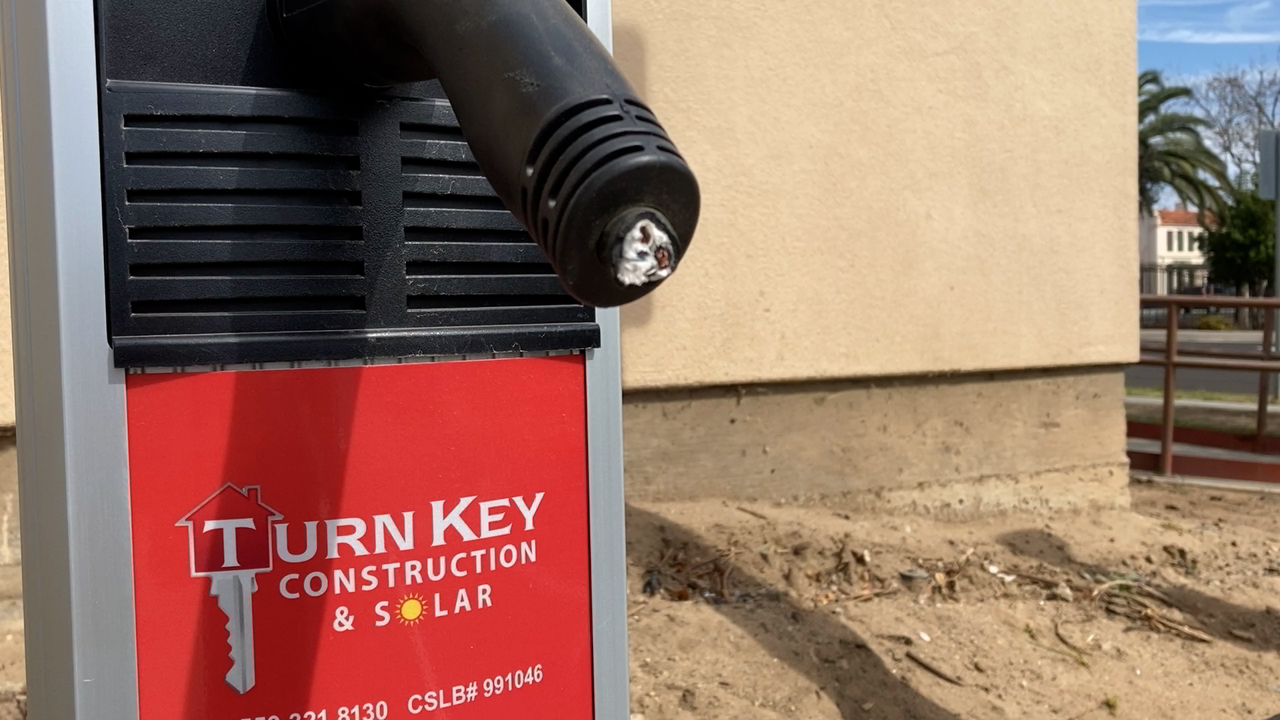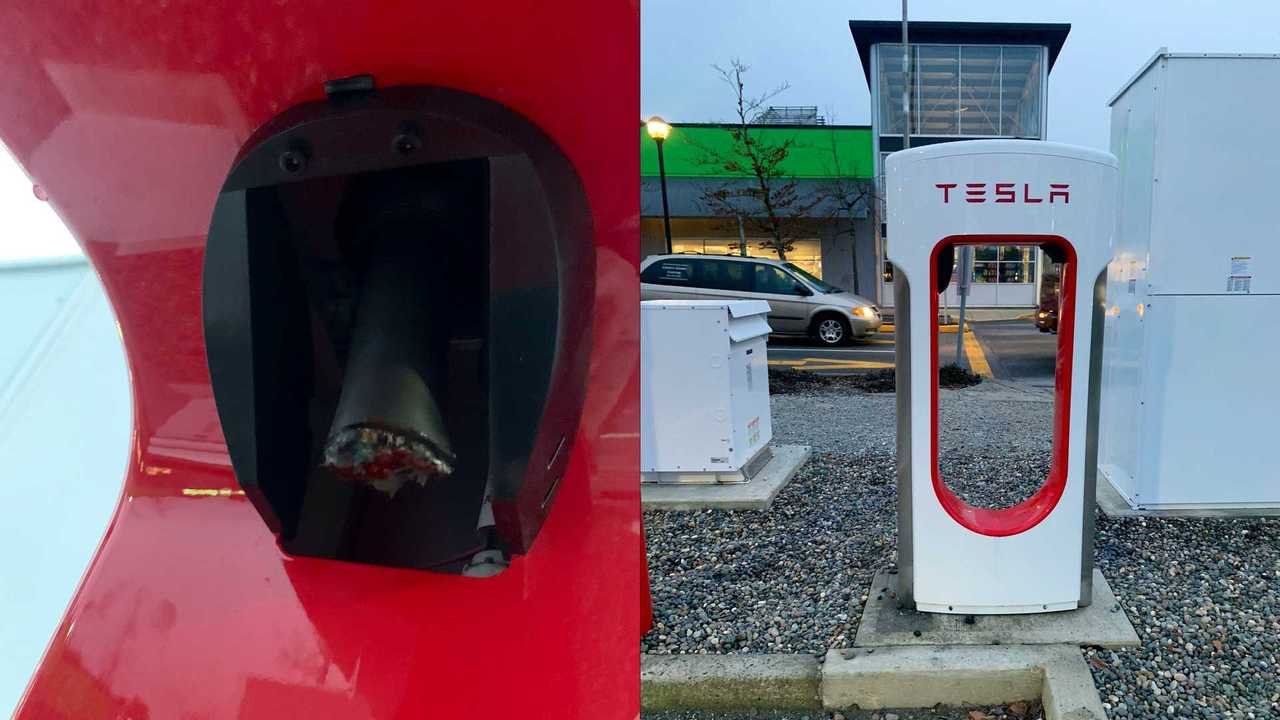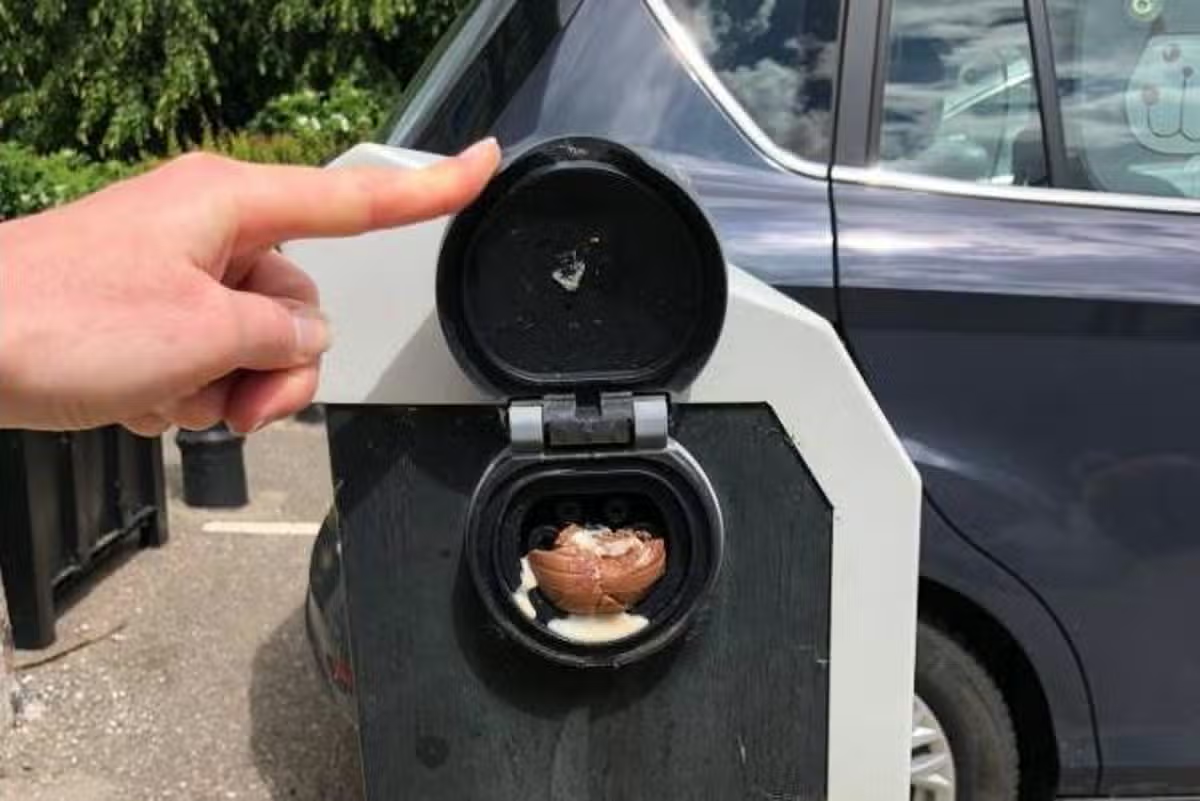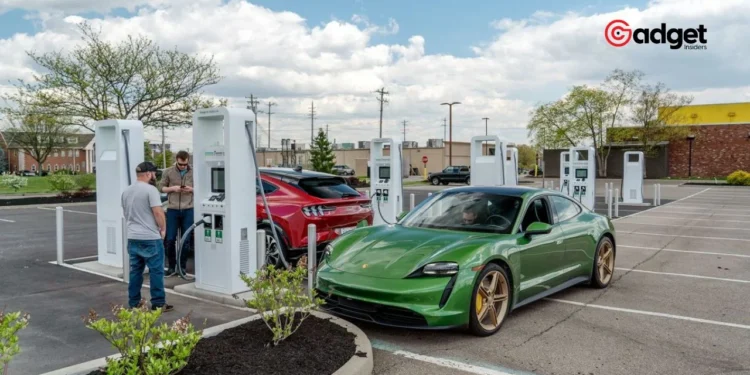As electric vehicles (EVs) continue to populate the roads, the infrastructure supporting them has become a prime target for vandals and thieves. Recent incidents across the nation highlight a troubling trend of increasing vandalism and attacks on electric car charging stations, causing significant disruptions and financial losses.

The Surge of Vandalism
A stark example unfolded in the Bay Area, where a Tesla Supercharging station fell victim to vandalism, with charging cords deliberately severed at every stall. This incident is not isolated. In Houston, TX, five separate Supercharger locations suffered similar fates, stripped of their essential components. The situation is dire in Fresno, CA, where over half of the city’s EV charging stations have been vandalized, some repeatedly.
The motive behind these acts has shifted over the years. Initially driven by anti-EV sentiments or personal vendettas, the current wave of vandalism is largely fueled by economic incentives. Thieves target the copper within the charging cables, selling the valuable metal for a fraction of the damage they cause.
This not only imposes hefty financial burdens on cities and charging operators, often amounting to thousands of dollars per incident, but it also leaves Electric vehicles drivers stranded and frustrated.

The Impact on Electric vehicles Owners and Operators
Tesla Superchargers in Houston have been notably affected, with recent vandalism disrupting the city’s charging network. Tesla has responded promptly, advising drivers to avoid the impacted stations until repairs are completed. Similarly, a TikTok video from Vallejo, CA, documented the extensive damage at a local charging station, showcasing every charging cord cut, starkly illustrating the challenges facing EV infrastructure.
Not even new installations are safe. In Sumner, WA, chargers installed by Puget Sound Energy were vandalized repeatedly shortly after their inauguration. “I’m going to provide more security, we’re going to have a direct camera on this area,” said Dave Radcliffe, a property owner, in an interview with KING 5 Seattle, reflecting the growing need for enhanced security measures.

Government and Private Sector Responses
The response to this surge in vandalism is becoming more robust. In Fresno, city officials have decided to encase their chargers in custom steel cabinets, which can be locked during off-peak hours, to prevent further damage. This initiative, while costly, is deemed necessary to safeguard the infrastructure.
Wire theft, although a long-standing issue affecting various utilities, has seen a marked increase in recent years, particularly with public Electric vehicles chargers. The Washington State Department of Transportation reported $1.5 million in losses due to wire theft on public property since 2021. Minneapolis also recorded 2023 as its worst year for wire theft, with Electric vehicles chargers becoming a new target by year’s end.
Why Are EV Stations Targeted?
The placement of Electric vehicles chargers in publicly accessible and high-traffic areas makes them vulnerable, especially during the quiet night hours. Proposals to position these chargers in more secure locations, such as under lit canopies or near 24-hour facilities, are being considered to mitigate this vulnerability.
A Call for Community Vigilance
The community can play a crucial role in combating this trend. Increased security measures, such as better lighting and surveillance, are effective deterrents. However, community vigilance and prompt reporting of suspicious activities can also make a significant difference.
As the infrastructure for electric vehicles expands, so does the need for protecting it. It’s not just about safeguarding property; it’s about ensuring the reliability of the green transition on which our future mobility depends. If you have experienced or witnessed such vandalism, sharing your story could help shape more effective prevention strategies.
Your experiences and observations are invaluable. Have you been affected by vandalism of charging stations? Have you noticed an uptick in these incidents? Your input could help drive the conversation forward and lead to more robust solutions.










